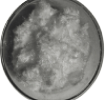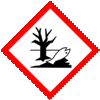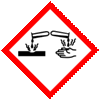Methoxylamine-HCl or Methoxylamine hydrochloride or O-Methylhydroxylamine-HCl dry powder and 30% aqueous solution Manufacturers, with SDS GHS MSDS Sheet |
Supplier, Manufacturer, Exporter of Methoxylamine-HCl dry powder and 30% solution, Muby Chemicals of Mubychem Group, established in 1976, is the original manufacturers of Specialty Chemicals, Pharmaceutical Excipient, Fragrance Food & Flavor chemicals, Reagent Grade Chemicals, Shale Gas Fracturing Chemicals in India. Mubychem Group has several manufacturing facilities spread across Western India and world wide contacts and toll manufacturers. We are exporting globally to countries like USA, Canada, Europe, UAE, South Africa, Tanzania, Kenya, Egypt, Nigeria, Cameroon, Uganda, Turkey, Mexico, Brazil, Chile, Argentina, Dubai, Korea, Vietnam, Thailand, Malaysia, Indonesia, Australia, China, Germany, France, Italy, Portugal, Bangladesh, etc. The products are offered as per required specifications and in correct shape and size in mm or meshs or microns as specified by the buyer. The participating units have one or more accreditations like FDA - cGMP and GLP approval, ISO-9001 Certified, "REACH" Registered, ISO-14001, ISO/IEC 17025, ISO-22000, FSSC 22000, ISO 45001, Kosher Certified, Halal Certified, HACCP, FSSAI. We offer Commercial Pure & IP BP EP Ph Eur USP NF JP FCC Food Grade Analytical Reagent Grades of Chemicals |
| Bookmark this Web Site -- or -- Email This Page Info to a Colleague or Yourself |
Search our website here:







Methoxylamine-HCl or Methoxylamine hydrochloride or O-Methylhydroxylamine-HCl dry powder and 30% aqueous solution: CAS Number: 593-56-6, EINECS EC Number: 209-798-7, Molecular Formula: CH6ClNO or CH3ONH2-HCl, Molecular Weight: 83.52, HS Code ---**
How big is your requirement or how small
We serve it all.
Specifications, Safety Data Sheet, Manufacturing process details, Wholesale retail buy sell prices, Uses etc available on line in these pages for Methoxylamine-HCl or Methoxylamine hydrochloride or O-Methylhydroxylamine-HCl dry powder and 30% aqueous solution.
For SDS MSDS Sheet Click
SDS MSDS Sheet of Methoxylamine-HCl or Methoxylamine hydrochloride or O-Methylhydroxylamine-HCl dry powder and 30% aqueous solution Manufacturers
Methoxylamine hydrochloride
Methoxylamine-HCl or O-Methylhydroxylamine-HCl dry powder and 30% aqueous solution Pure Suppliers

Properties and Specifications of Methoxylamine-hcl or methoxylamine hydrochloride or O-Methylhydroxylamine-HCl 30% aqueous solution:
Appearance: Colorless to pale yellow liquid
Odor: Choking
pH of aqueous solutions: <1
Relative density: 1.12 - 1.14
Solubility: Freely soluble in water and alcohol.
Appearance of 5% solution: almost clear.
Properties and Specifications of Methoxylamine-hcl or methoxylamine hydrochloride or O-Methylhydroxylamine-HCl dry powder
Appearance: White crystalline powder.
Assay: 99% minimum.
Melting point (for dry item): 151C to 154C for powder.
Boiling point: around 1100C for powder.
Storage: Refrigerator; Shipping: Ambient.
We manufacture and supply as under:
(1R,2S)-1-Phenyl-2-(1-pyrrolidinyl)-1-propanol
We also manufacture and supply as under:
Thiamine Hydrochloride or Vitamin B1.
Manufacturers:
MUBY CHEMICALS
Ambernath Mumbai, Ankleshwar Gujarat, India
TEL: (OFFICE) +912223770100, +912223726950
Current Date Time in India GMT+5:30
e-mail: info@mubychem.com
USA, Canada, Mexico and other American
neighbouring buyers may
e-mail: us@mubychem.com
Call toll-free 1-877-682-9243 (1-877-MUBYCHEM)

Copyright and Usual Disclaimer is Applicable.
Last
5 May, 2024




Exporters to USA Canada UAE Europe South Africa Tanzania Kenya Uganda Egypt Nigeria Turkey Mexico Brazil Argentina Chile Dubai etc.
Global or International Suppliers, Exporters, Importers, Manufacturers
I shall pass through this world, but once. If therefore, there is any good that I can do, or if there is any favor that I can show to a fellow human being, let me do it now. Let me not defer or neglect it. For I shall not tread this way again
Methoxylamine-HCl or Methoxylamine hydrochloride SDS, Safety Data Sheet
MSDS Sheet, Material Safety Data Sheet 04-Nov-20
1. Product Identification
Product Name & Other Names: Methoxylamine-HCl or Methoxylamine hydrochloride.
CAS No.: 593-56-6
EINECS EC Code: 209-798-7
Molecular Weight: 83.52
Molecular Formula: CH6ClNO or CH3ONH2-HCl
Relevant uses and uses advised against (if any): Fracturing and Industrial Manufacturing Use.
Supplier: As per letterhead.
2. Hazards Identification
GHS, Globally Harmonized System Classification in accordance with 29 CFR 1910
Classification according to Regulation (EC) No 1272/2008
Acute toxicity, Oral (Category 3)
Skin corrosion/irritation Category 1A, B, C H314
Specific target organ toxicity - single exposure (Category 3), Respiratory system, H335
Short-term (acute) aquatic hazard (Category 1), H400
Labeling according to GHS USA & Regulation (EC) No 1272/2008
GHS Label Elements  Aquatic Toxicity |
GHS Label Elements |
Signal Words: Danger
Hazard statements:
H302: Harmful if swallowed
H314: Causes severe skin burns and eye damage.
H335: May cause respiratory irritation.
H400: Very toxic to aquatic life.
Precautionary statements:
P261: Avoid breathing dust/ fume/ gas/ mist/ vapors/ spray.
P262: Do not get in eyes, on skin, or on clothing.
P264: Wash skin thoroughly after handling.
P270 Do not eat, drink or smoke when using this product.
P273: Avoid release to the environment.
P280: Wear protective gloves/protective clothing/eye protection/face protection.
P301+P330+ P331: IF SWALLOWED: Rinse mouth. Do NOT induce vomiting.
P303+P361+P353: IF ON SKIN (or hair): Remove/Take off immediately all contaminated clothing. Rinse skin with water/shower.
P304+P340: IF INHALED: Remove victim to fresh air and keep at rest in a position comfortable for breathing.
P305+P351+P338: IF IN EYES: Rinse cautiously with water for several minutes. Remove contact lenses, if present and easy to do. Continue rinsing.
P314: Get Medical advice/attention if you feel unwell.
P337+P313: If eye irritation persists: Get medical advice/ attention.
P363: Wash contaminated clothing before reuse
P391: Collect spillage.
P501: Dispose of contents/ container to an approved waste disposal plant.
Classification according to EU Directives 67/548/EEC or 1999/45/EC:
Hazard Symbol:
C = Corrosive
Xn = Harmful
N = Dangerous for the environment
Risk Phrase:
R22 = Harmful if swallowed.
R34 = Causes burns.
R41 = Risk of serious damage to eyes.
R50 = Very toxic to aquatic organisms.
3. Composition/Information on Ingredients
Product Name & Other Names: Methoxylamine-HCl or Methoxylamine hydrochloride.
CAS No.: 593-56-6
EINECS EC Code: 209-798-7
4. First Aid Measures
Always seek medical attention after first aid measures are provided.
Inhalation: If inhaled, remove to fresh air. If not breathing, give artificial respiration. If breathing is difficult, give oxygen. Mists and vapors can irritate the throat and respiratory tract. High vapor concentrations may cause central nervous system effects. May be fatal if inhaled. Symptoms may include headaches, dizziness, and drowsiness. Get medical attention.
Ingestion: Ingestion can cause gastrointestinal irritation, nausea, vomiting and diarrhea and even death. Contact medical center quickly. Never give anything by mouth to an unconscious person. Get medical attention.
Skin Contact: Causes corrosive burns. Brief exposures may cause irritation and defatting of the skin. Immediately flush skin with plenty of water for at least 15 minutes. Remove contaminated clothing and shoes. Get medical attention. Wash clothing before reuse. Thoroughly clean shoes before reuse.
Eye Contact: Causes burns and may result in permanent injury to eyes including blindness. Check for and remove any contact lenses. Immediately flush eyes with running water for at least 15 minutes, keeping eyelids open. Cold water may be used. Get medical attention.
5. Fire Fighting Measures
Auto ignition temperature: NA
Toxic fumes, nitrogen oxides, hydrogen chloride and carbon monoxide may be formed in fire. Explosive mixtures can form with air. Combustion products are toxic. Solvent vapors can travel to an ignition source and flash back.
Fire Extinguishing Media: Dry chemical, foam, carbon dioxide or water fog. Solid water streams may spread burning liquid. Water may not be effective.
Special Information: In the event of a fire, wear full protective clothing and NIOSH-approved self-contained breathing apparatus with full face piece operated in the pressure demand or other positive pressure mode. At high temperatures under fire conditions, it may produce toxic or irritating fumes. Fire-extinguishing work is done from the windward and the suitable fire-extinguishing method according to the surrounding situation is used. Uninvolved persons should evacuate to a safe place.
6. Accidental Release Measures
Personal precautions, protective equipment and emergency procedures: Avoid breathing dust/fumes/gas/mist/vapors/spray. Ensure adequate ventilation. Use individual protective equipment (waterproof boots, suitable protective clothing, safety glasses, etc.). Restrict unprotected personnel from the area. Prevent any contact with hot surfaces. Do not approach facing the wind. Do not touch the spilled material.
Environmental precautions: Do not let the product enter drains, soil or water sources.
Methods and materials used for containment Cleanup procedures and Storage:
Small Spill: Mop and pick up the material and place in an appropriate waste disposal container. Finish cleaning by spreading water on the contaminated surface and dispose of according to local and regional authority requirements.
Large Spill: Contain spilled material. Isolate spill or leak area immediately. Keep unauthorized personnel away. Stay upwind. Keep out of low areas where vapors may accumulate. Eliminate all ignition sources (no smoking, flares, sparks or flames) in immediate area. Keep away from heat. Keep away from sources of ignition. Provide ventilation. Prevent entry into waterways, sewers, basements or confined areas. Cover with dry earth, sand or other non-combustible material and transfer to containers. Use clean non-sparking tools to collect absorbed material.
7. Handling and Storage
Precautions for safe handling: Apply according to good manufacturing and industrial hygiene practices. Ensure proper ventilation. Wash thoroughly after handling. Do not drink, eat or smoke while handling. Avoid contact with skin, eyes and clothing. Minimize dust generation. Avoid breathing dust/fumes/gas/mist/vapors/spray. Avoid contact with eyes, skin, and clothing. Keep container tightly closed. Avoid ingestion and inhalation. Use individual protective equipment (waterproof boots, suitable protective clothing, safety glasses, etc.). Prevent any contact with hot surfaces.
Conditions for safe storage, including any incompatibilities: Store in cool, dry and ventilated area away from heat sources and protected from sunlight in tightly closed original container. Keep air contact to a minimum. Do not leave the material container open. Store protected from heat, sparks and ignition sources and incompatible materials. Avoid contact with skin and eyes. Avoid inhalation of dust/mist/vapor. Do not store with incompatible materials like acids, oxidizing agents, heat and sparks. Containers may be hazardous when empty. Storage: Refrigerator; Shipping: Ambient.
8. Exposure Controls/Personal Protection
Airborne Exposure Limits: This product does not contain any hazardous materials with occupational exposure limits established by the region-specific regulatory bodies.
Ventilation System: A system of local and/or general exhaust is recommended to keep employee exposures as low as possible. Local exhaust ventilation is generally preferred because it can control the emissions of the contaminant at its source, preventing dispersion of it into the general work area. Please refer to the ACGIH document, Industrial Ventilation, A Manual of Recommended Practices, most recent edition, for details.
Personal Respirators (NIOSH Approved): For conditions of use where exposure to the substance is apparent and engineering controls are not feasible, consult an industrial hygienist. For emergencies, or instances where the exposure levels are not known, use a full-face piece positive-pressure, air-supplied respirator. WARNING: Air purifying respirators do not protect workers in oxygen-deficient atmospheres.
Skin Protection: Wear impervious protective clothing, including boots, gloves, lab coat, apron or coveralls, as appropriate, to prevent skin contact.
Eye Protection: Use chemical safety goggles and/or a full face shield where splashing is possible. Maintain eye wash fountain and quick-drench facilities in work area.
Other Control Measures: Maintain good housekeeping in work area. Dust deposits on floors and other surfaces may pick up moisture and cause the surfaces to become slippery and present safety hazards. Handle in accordance with good industrial hygiene and safety practice. Wash hands after handling.
9. Physical and Chemical Properties
Appearance: Colorless to pale yellow liquid for solution and White crystalline powder for dried.
Odor: Choking.
Odor threshold: Not available.
pH of aqueous solutions:<1.
Relative density: 1.12 - 1.14 for solution and powder density is not available.
Melting point/freezing point: 151C to 154C for powder.
Initial boiling point and boiling range: around 1100C for powder.
Flash point: Not available.
Auto-ignition temperature: Not available.
Decomposition temperature: Not available.
Upper/lower flammability or explosive limits: Not available.
Vapor pressure: Not available.
Vapor density: Not available.
Evaporation rate: Not available.
Flammability (solid, gas): Not available.
Partition coefficient: n-octanol/water: Not available.
Solubility: Miscible with water
Viscosity: Not available.
Molecular Weight: 83.52
Molecular Formula: CH6ClNO or CH3ONH2-HCl
10. Stability and Reactivity
Stability: Stable under ordinary conditions of use and storage.
Hazardous Decomposition Products: Carbon dioxide, carbon monoxide, nitrogen oxides, hydrogen chloride and toxic fumes may form when heated to decomposition.
Hazardous Polymerization: Not reported. However, it can explode under certain conditions.
Incompatibilities: Acids, oxidizing agents, heat and sparks.
Conditions to Avoid: Heat, flames, ignition sources, moisture and incompatibles.
11. Toxicological Information
Acute toxicity: Not available.
Carcinogenicity: No component of this product present at levels greater than or equal to 0.1% is identified as probable, possible or confirmed human carcinogen by IARC, ACGIH, NTP or OSHA.
Mutagenic Effects: Not available.
Developmental Toxicity: Not available.
Reproductive Effects: No information available.
12. Ecological Information
Toxicity to fish: LC50 - Fish - 0,1 mg/l - 96 h.
Toxicity to daphnia and other aquatic invertebrates: EC50 - Daphnia pulex (Water flea) - 0,394 mg/l - 48 h.
Environmental Toxicity: Very Toxic to aquatic organisms.
Persistence and Degradability: Soluble in water Persistence is unlikely.
Bioaccumulation / Accumulation: No information available.
Mobility: Likely be mobile in the environment due to its water solubility.
Results of PBT and vPvB assessment: Not available.
13. Disposal Considerations
Whatever cannot be saved for recovery or recycling should be managed in an appropriate and approved waste disposal facility. Processing use or contamination of this product may change the waste management options. State and local disposal regulations may differ from federal disposal regulations. Dispose of container and unused contents in accordance with federal, state and local requirements.
14. Transport Information
USA DOT (Land) & ADR/RID
Hazard Class: 8 Corrosive
Proper Shipping Name: UN3261, Corrosive solid, acidic, organic, n.o.s. (Methoxyammonium chloride), 8, PG II
DOT, IMDG, IATA Hazard Class:
Hazard Class: 8 Corrosive
Proper Shipping Name: UN3261, Corrosive solid, acidic, organic, n.o.s. (Methoxyammonium chloride), 8, PG II.
15. Regulatory Information
USA:
SARA 302: No chemicals in this material are subject to the reporting requirements of SARA Title III, Section 302.
SARA 313: This material does not contain any chemical components with known CAS numbers that exceed the threshold (De Minimis) reporting levels established by SARA Title III, Section 313.
SARA 311/312 Hazards: Acute Hazard, Fire.
California Prop 65: No Significant Risk Level: None of the chemicals in this product are listed.
Disclaimer:
**************************
Our company provides this MSDS sheet in good faith but makes no representation as to its comprehensiveness or accuracy. This SDS sheet is intended only as a guide to the appropriate precautionary handling of the material by a properly trained person using this product. The above information has been compiled from various sources and has the possibility of discrepancy and being out-dated information. Individuals receiving the information must exercise their independent judgment and do further search in determining its appropriateness for a particular purpose. In no case shall our company be liable to loss or damages by the product user.
**************************
















